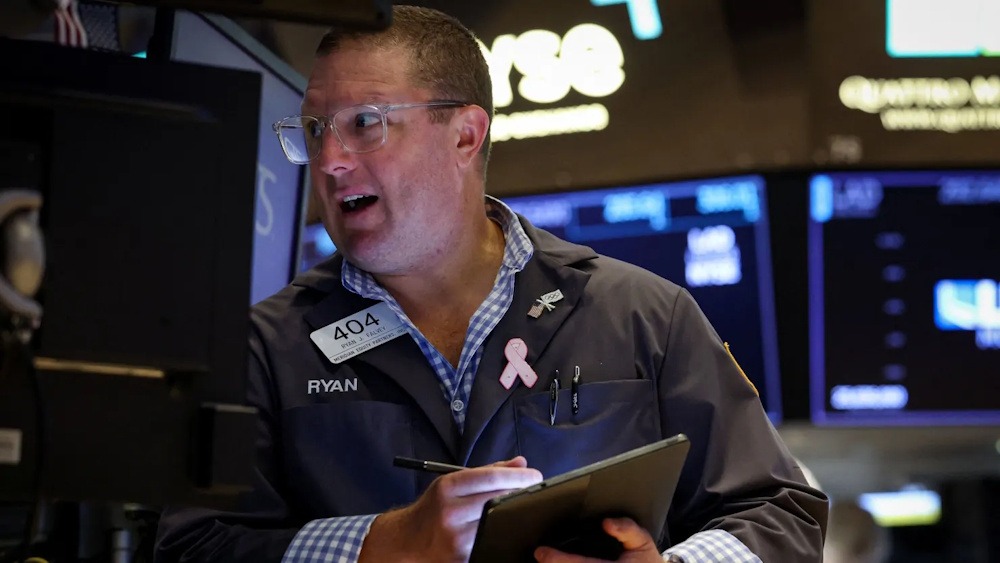
Dow futures experienced a modest increase on Wednesday in anticipation of significant earnings reports from Nvidia, a prominent player in the AI sector, which are expected to influence short-term market sentiment. Significant tariffs on Indian imports to the United States have now been implemented, while the French markets are poised to attract attention due to the nation’s political instability. Nvidia, a key barometer of the artificial intelligence (AI) boom, is set to report its fiscal second quarter results after the market close. Following a period of significant upward momentum in the markets, technology stocks have experienced a downturn this month as investor enthusiasm has waned. Nvidia’s results are poised to influence the near-term risk appetite, providing insights into the justification of the elevated valuations for AI favorites. Overall, the AI chipmaker is projected to report a 53% increase in second-quarter revenue to $46 billion, as indicated by LSEG data. However, this may not suffice to satisfy investors, considering it remains significantly below the triple-digit growth experienced in several recent quarters. Investors will also be keenly observing the company’s outlook, as the future of Nvidia’s operations in China is contingent upon the developments in tariff negotiations and restrictions on chip trade between the world’s two largest economies.
Dow futures experienced a modest increase on Wednesday, as market participants directed their attention towards the forthcoming results from Nvidia, a prominent player in the AI sector, which is anticipated to influence market sentiment for the remainder of the week. At 03:00 ET (07:00 GMT), the S&P 500 futures exhibited an increase of 20 points, representing a rise of 0.1%. Similarly, Nasdaq 100 futures experienced a gain of 4 points, also reflecting a 0.1% uptick, while Dow futures advanced by 15 points, corresponding to a 0.1% increase. The major indices experienced an upward movement on Tuesday, reflecting a certain level of confidence in anticipation of Nvidia’s results. The chipmaker is regarded as a bellwether for the broader market and serves as a significant indicator of advancements in AI development. Nvidia has surpassed earnings expectations in 11 of the last 12 quarterly reports. This week signifies the conclusion of August trading, a period that has traditionally been challenging for equities. Nonetheless, the three primary U.S. indexes are trending towards positive performance this month, with the broad-based S&P 500 reflecting a 2% increase, the 30-stock Dow Jones Industrial Average showing a 2.9% rise, and the Nasdaq Composite also exhibiting a 2% gain.
The implementation of U.S. President Donald Trump’s increased trade tariffs on India, now set at 50%, has commenced following the expiration of the deadline, which saw no trade agreement materialize between Washington and New Delhi. Earlier this month, Trump outlined a 25% tariff on Indian exports to the United States, indicating that the levy would escalate to 50% in three weeks. This move reflects Washington’s displeasure regarding India’s ongoing purchases of Russian oil. In July, shipping data indicated that New Delhi ranked as Russia’s second-largest purchaser of oil, following Saudi Arabia. India, in conjunction with Brazil, currently encounters some of the highest tariff levels enacted by the United States. “We estimate 70% ($55 billion) of India’s exports to the United States are now under serious threat, accelerating downside risks to growth,” stated Aastha Gudwani, India chief economist at Barclays: “From a ‘good friend’ to a ‘bad trading partner’, it has undergone significant transformation.”
The French markets are poised to attract attention on Wednesday following Prime Minister Francois Bayrou’s attempt to secure support for his widely disapproved debt-reduction strategy, which has resulted in exacerbating the nation’s political and financial instability. Earlier this week, Bayrou announced a confidence vote regarding his debt-cutting plan, scheduled for Sept. 8. However, this proposal faced significant opposition from rival parties, which may curtail his limited tenure as the head of a minority government. Should Bayrou’s position weaken, President Emmanuel Macron may opt to dissolve parliament, thereby facilitating new legislative elections, or alternatively, he could choose to form a new government. Nevertheless, it is improbable that either approach will effectively address France’s fiscal challenges or the prevailing political impasse. France’s blue-chip CAC 40 has experienced a decline of over 3% this week. Concurrently, the spread between French and German 10-year government bond yields, which serves as an indicator of the premium investors demand for holding French debt, expanded on Tuesday to approximately 79 basis points—marking its widest point since April.
Crude to retreat further – Goldman Oil prices stabilized following significant declines in the previous session, as market participants assessed the implications of substantial new U.S. tariffs imposed on India, the world’s third-largest consumer of crude oil. At 03:00 ET, Brent futures experienced a minor decline of 0.1%, settling at $66.66 per barrel, while U.S. West Texas Intermediate crude futures saw a slight increase of 0.1%, reaching $63.27 per barrel. Both contracts experienced a decline of over 2% on Tuesday, following a strong start to the week that saw them reach a two-week high. Goldman Sachs anticipates a decrease in the price of Brent crude futures contracts, projecting it to fall to the low $50s per barrel by late 2026, driven by an expected rise in the oil surplus in the upcoming year. “We anticipate that the oil surplus will expand, averaging 1.8 million barrels per day from the fourth quarter of 2025 through the fourth quarter of 2026, leading to an increase of nearly 800 million barrels in global stocks by the end of 2026,” stated the U.S. investment bank in a client note on Tuesday. Goldman indicated that Brent prices are expected to stay close to forward contract levels for the remainder of 2025, but are projected to dip below those contracts in the following year as the rise in OECD stock intensifies.
